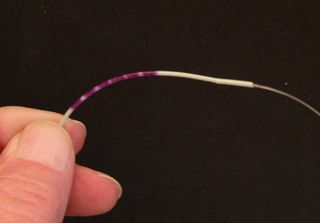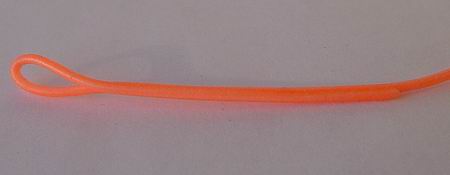- Home
- Baitfish/Minnows/Smelts
- Bass/Panfish
- Buzzers - Chironomids - Midges
- Caddis Flies
- Carp Flies
- Do It Yourself
- Dry Flies
- Emergers
- Euro Style Flies
- Feather/Hairwing Streamers
- Foam Flies
- Fore & Aft Flies
- Hairwing Atlantic Salmon Flies
- Nymphs
- Pacific Salmon
- Soft Hackles
- Steelhead Flies
- Step by Step
- Stoneflies
- Tandem Streamers
- Tenkara Flies
- Terrestrials
- Winged Wet Flies
- Wooly Buggers & Worms
Sunday, December 19, 2010
Sunday, December 5, 2010
DIY Fisherman's Neck Lanyard
Parts List
Cord (42 Inches Long)
Cord Lock
Badge Clip
Beads
Snap Swivels
Hollow Tubing
Cut the cord to about 42 inches long and singe the ends with a lighter. Using whatever kind of beads you want, string them onto the cord along with a badge clip and snap swivels. Use as many snap swivels as you want. Its totally your choice. Use the badge clip at the bottom to pin the lanyard to you shirt to prevent the lanyard from swinging around all over the place.
 |
| Add caption |
Add the cord lock and the lanyard is complete.
If you feel the the lanyard will dig into your neck, you can always install some aquarium air tubing onto the lanyard to make it more comfortable on your neck. Cut the tubing to about 18 inches long and cut a v notch at the mid point of the tubing. String the cord into the tubing from each side and add the cord lock to complete the lanyard.
Detail of the v notch.
Make up some tippet reel holders to add to the lanyard.
Add the tippet holder to the lanyard.
The cord I'm using is 1/8 inch diameter nylon. Substitute as required.
Badge clips can be found a office supply stores.
Snap swivels from the fishing department of your local big box store.
Cord locks can be found online. Search for them on GOOGLE.
Hollow tubing from your local aquarium store or granny's oxygen supply store.
Beads from your local big box craft store.
I hope you found this useful. String up a lanyard for yourself, family and friends.
Saturday, November 27, 2010
Some Midges
Flies from the internet.
Hook: Scud style
Bead: Rainbow color
Thread: Olive
Rib: Black wire
Thorax: Olive Ice Dubbing
Attach the bead and tying thread
Tie in the wire behind the bead and wrap thread toward the bend of the hook
Build a thread body and rib with the wire
Trim off the wire and dub the thread
Wrap the thorax with the dubbed thread and whip finish
Hook: Scud style
Bead: Pearl color
Thread: Red
Tag & Body: Red thread and pearl tinsel
Thorax: Sow/Scud Dubbing - Rainbow Color
Add bead to the hook and wrap red thread for the under body and tag
Attach pearl tinsel and wrap the body as shown above
Dub the thread with the rainbow colored sow/scud dubbing
Wrap a thorax behind the bead, tie off the thread and whip finish
Hook: Scud style
Bead: Silver Tungsten
Thread: Red
Tail: Pheasant Tail Fibers
Body: Pearl Tinsel
Thorax: Sow/Scud Dubbing - Rainbow Color
Attach a silver tungsten bead and trying thread
Tie in the pheasant tail fibers and create the tail and body as shown above
Tie in pearl tinsel behind the bead
Wrap a tinsel body
Dub the tying thread with the rainbow sow/scud dubbing
Wrap a thorax behind the bead, tie off the thread and whip finish
Friday, November 26, 2010
Beadhead Buckskin Nymph
Beadhead Buckskin Nymph
Hook: Your Favorite
Bead: Black; size to match hook size
Thread: Color to match the buckskin
Body: Ultra-Suede (suede like yarn) by Rainbow Gallery
Tail/Legs: Brown hackle fibers
Labels:
beadhead,
buckskin,
caddis,
fly pattern,
fly tying,
hackle fibers,
midges,
nymph,
thread,
trout fly,
vintage fly tying
Stuck in Shuck Midge
Stuck in Shuck Midge
Hook - Tiemco 101, size 16-24
Thread - Black
Shuck - Amber Z-lon or equivalent
Shellback - White Z-lon or equivalent
Abdomen - Tying thread
Hackle - Grizzly
Thorax - Peacock Herl
Saturday, November 13, 2010
Bi-color Nymph
During a recent clean up of my external hard drive that holds my fly fishing and fly tying files that I have collected from many years of web surfing, I came upon a .PDF file of a pheasant tail nymph tied by a British fly tyer named Alan Bithell.. So I have decided to make this fly a new arrticle for this blog with a step by step tying instructions.
Hook: Nymph Style
Thread: Color to match body
Tail & Overbody: Pheasant Tail
Rib: Fine Copper Wire
Abdomen &: Thorax: Dubbing*
Tie in the pheasant tail fibers with the tips facing forward. The Pheasant tail should be about 1 1/4 to 1 1/2 hook shank long. Eventually these fibers will be pulled back to the hook bend and will make the back of the fly.
Pull the butt ends of the pheasant tail fibers forward and tie down behind the hook eye.
Pull the butt ends back towards the the hook bend and tie down. This is now the built up thorax area of the fly.
Trim off the butt ends of the pheasant tail fibers.
Tie in the copper wire and wrap the thread to the bend of the hook. Dub the thread with your favorite dubbing.
Dub the abdomen of the fly.
Dub the thorax with a darker color or use the same color as the abdomen. Your choice.
Tie off the thread behind the hook eye and trim it off.
Pull the pheasant tail fibers from the eye of the hook back to the bend of the hook and bind down with the copper wire.
Spiral wrap the copper wire forward and stop behind the thorax. Add a couple of half hitches or whip finish the wire and trim off the excess wire.
Top View
Side View
TYING TIP: When tying this fly, experiment with different colors of pheasant tail and/or different colors of dubbing. Use gold wire instead of copper or use the Ultra wire that comes in a rainbow of colors.
All Black Pheasant Tail
Natural Hares Ear
Saturday, November 6, 2010
Worms, Worms & More Worms
Wednesday, October 27, 2010
Subscribe to:
Comments (Atom)



























































